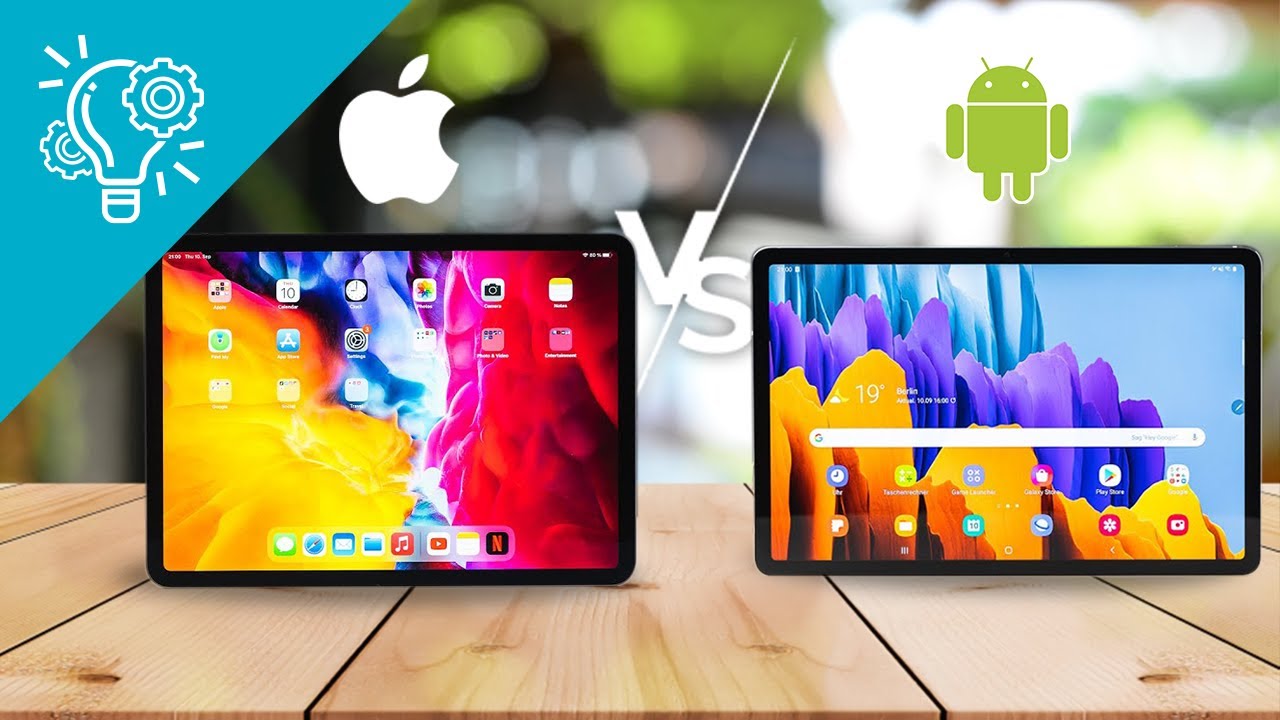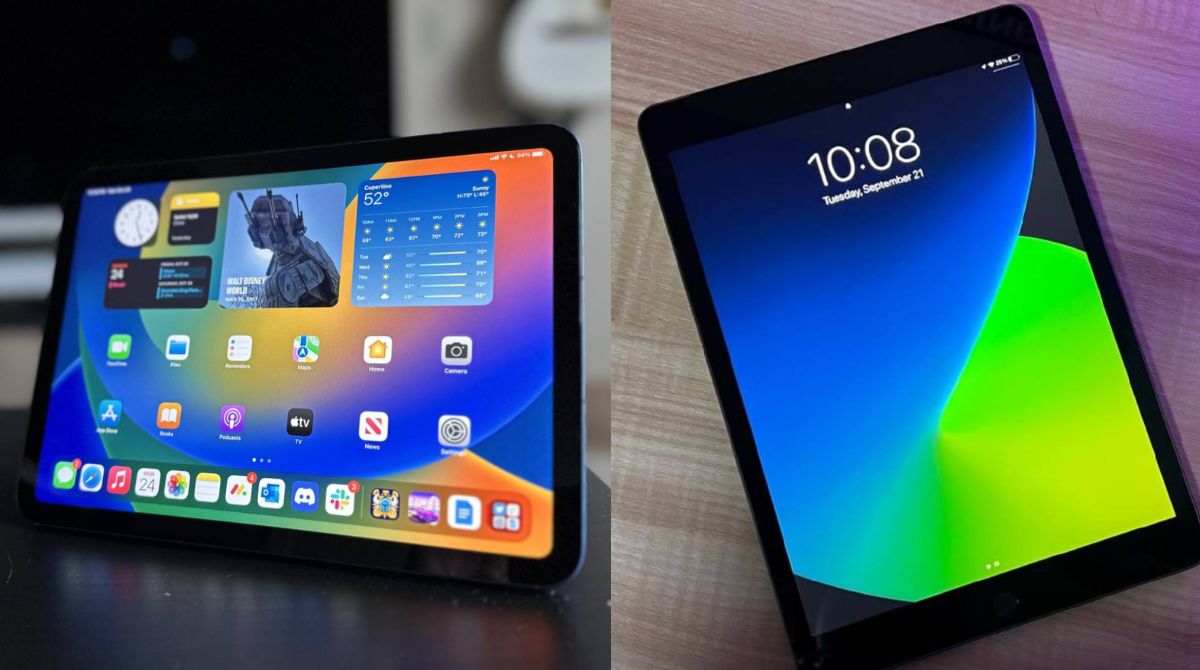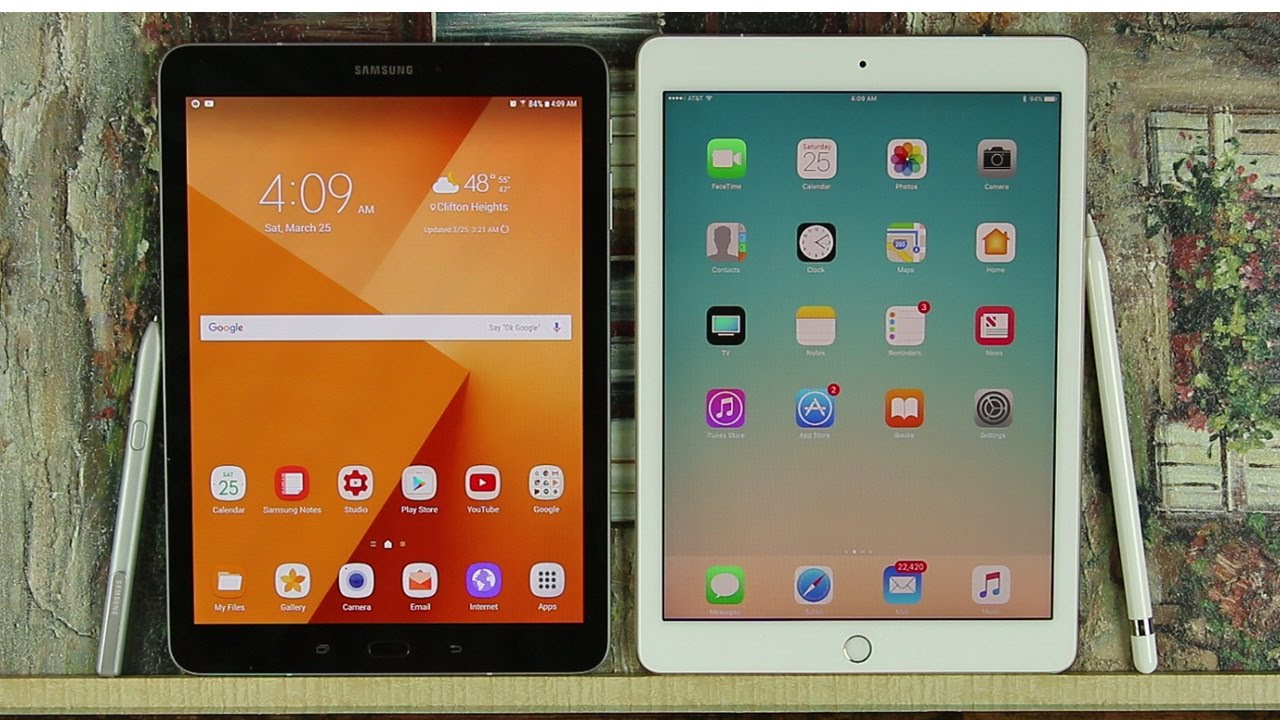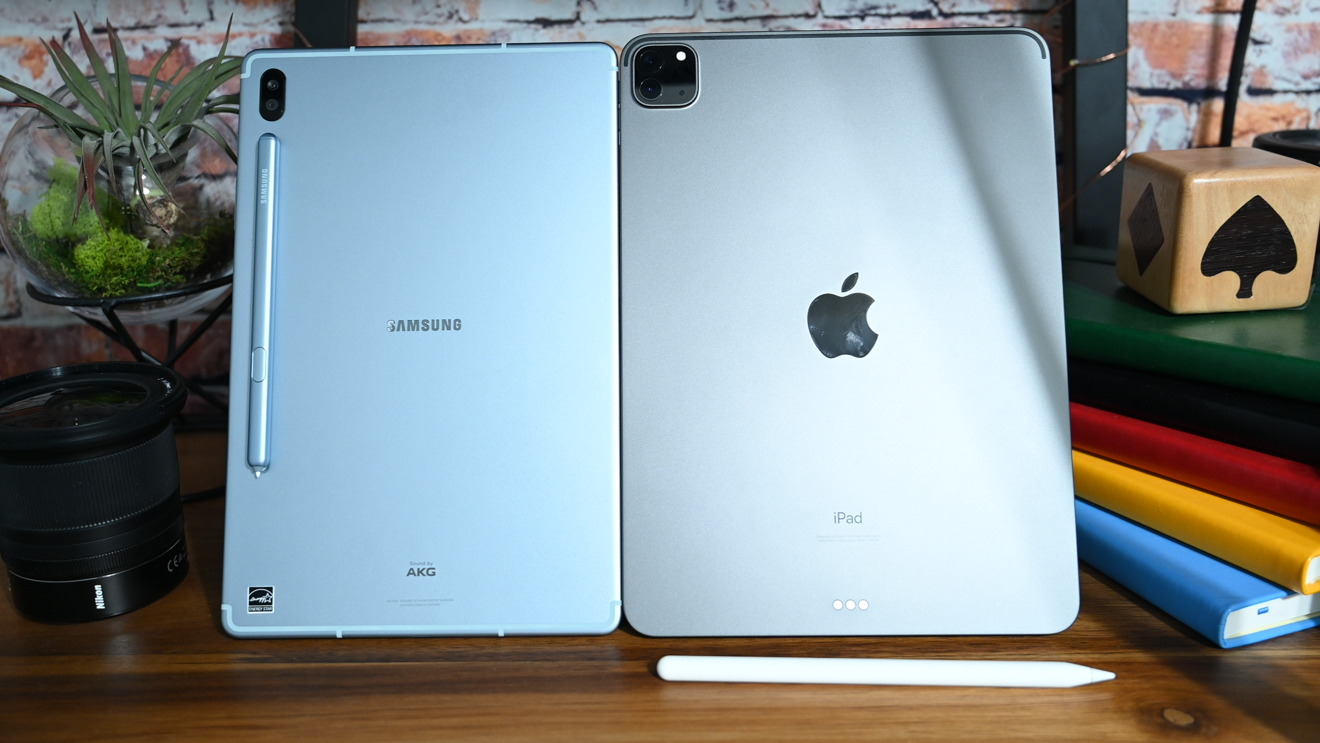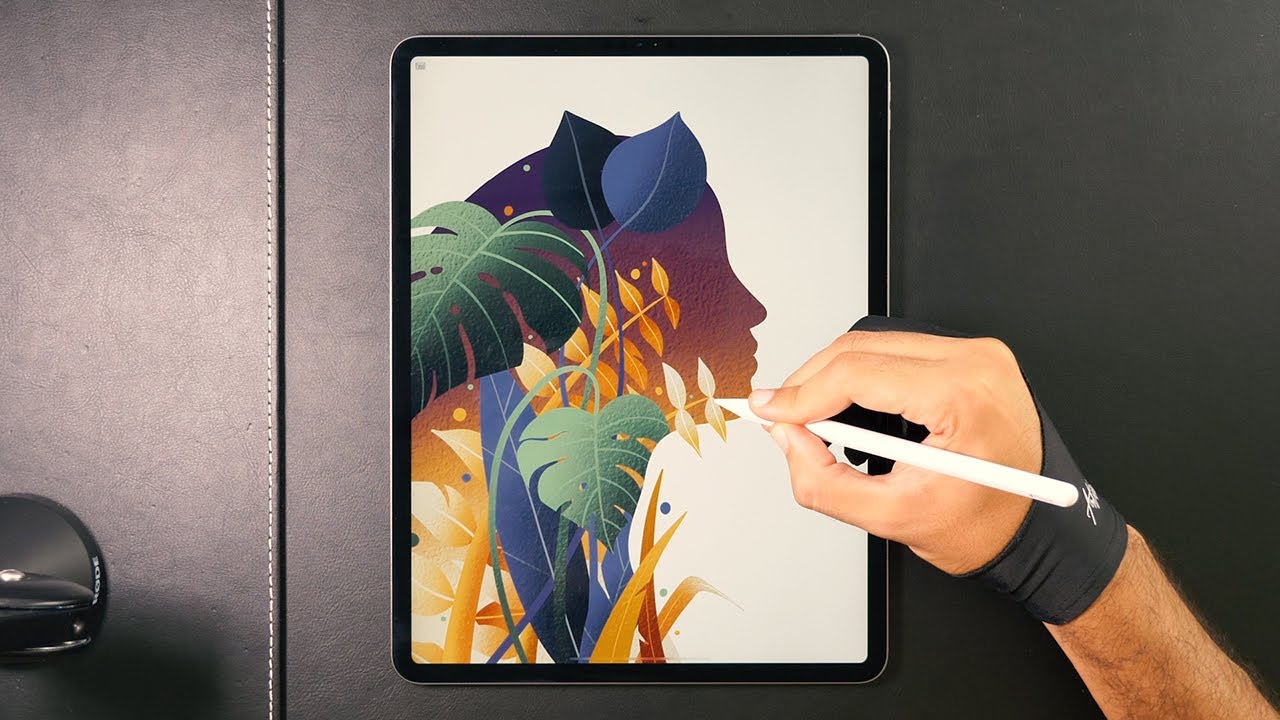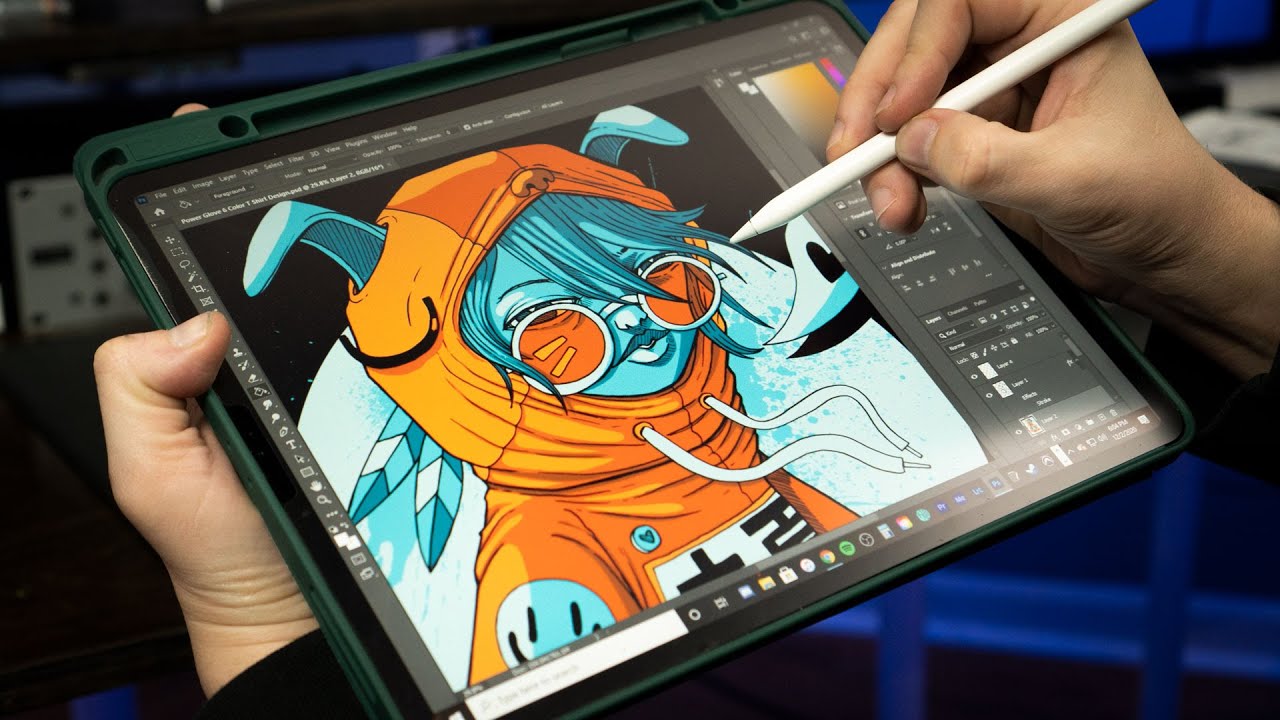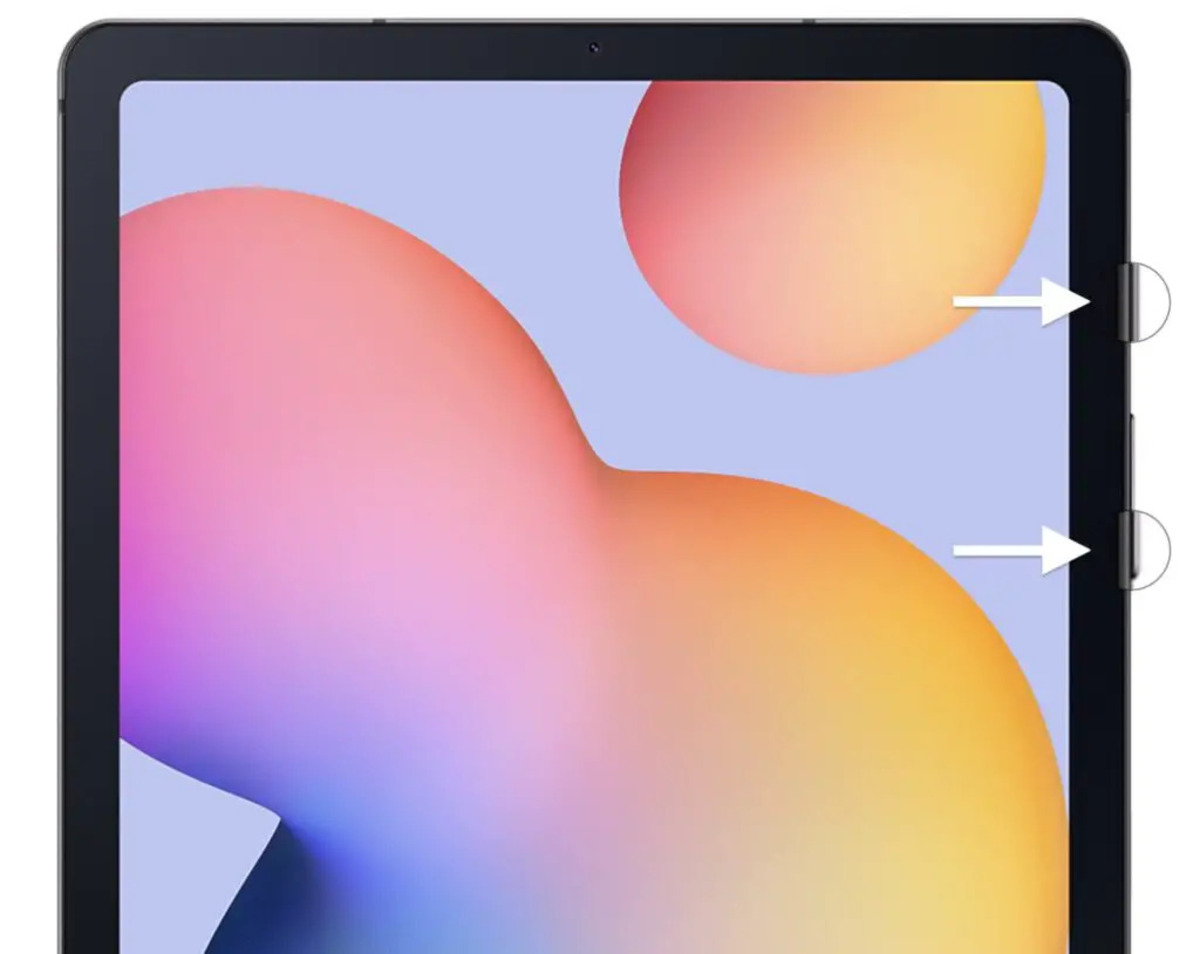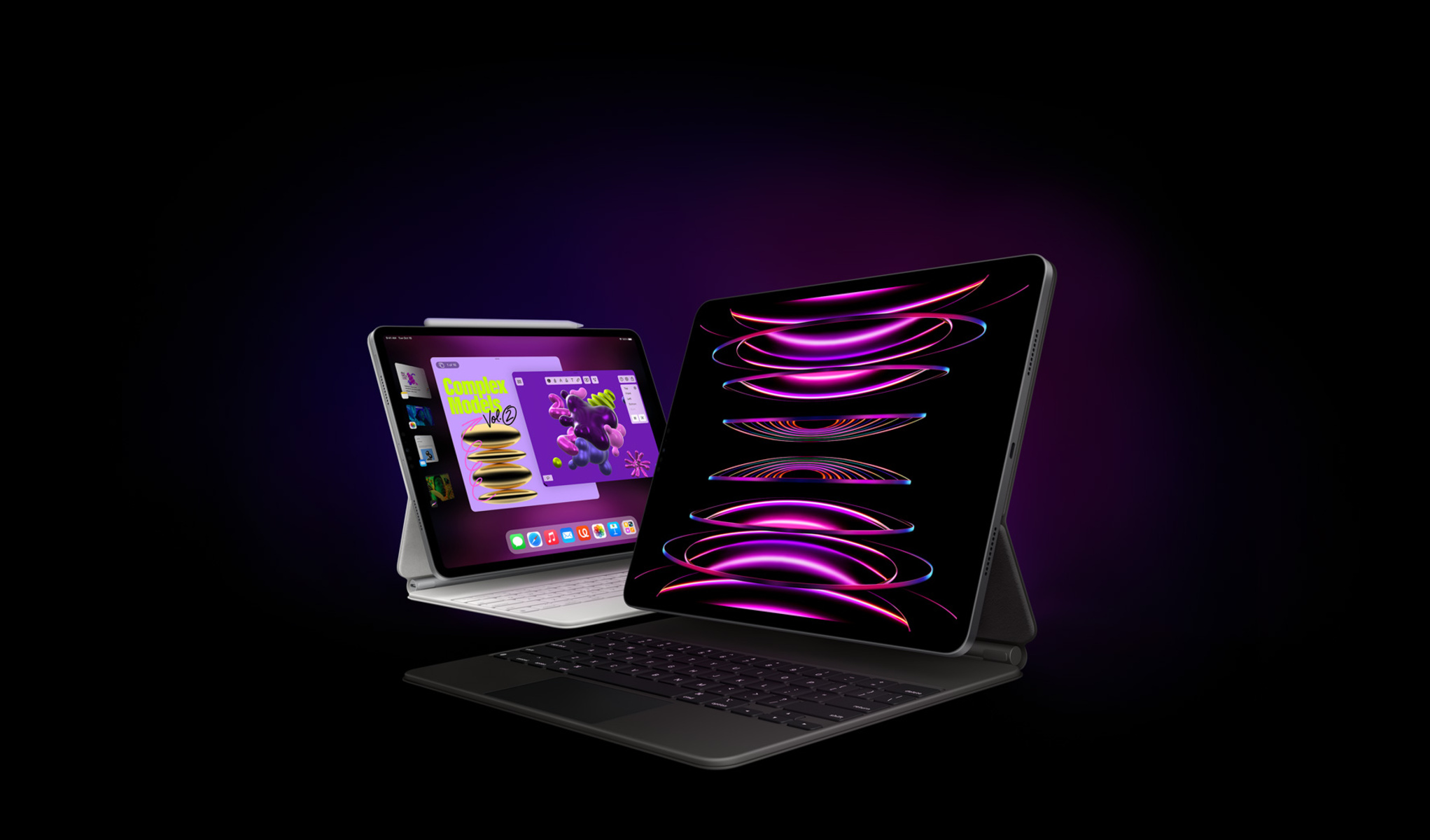Introduction
The world of technology has witnessed a rapid evolution over the years, and one of the most significant advancements has been the introduction of portable computing devices. Among these devices, iPads and tablets have become immensely popular, revolutionizing the way we consume and interact with digital content. While both iPads and tablets offer a similar purpose of providing a portable and versatile computing experience, there are distinct differences between the two.
iPad, a term coined by Apple, refers specifically to a line of tablets developed by the company. On the other hand, tablets encompass a broader category of portable computing devices, including brands from various manufacturers like Samsung, Microsoft, and Amazon. This article aims to provide a comprehensive understanding of the differences between iPads and tablets, taking into account factors like design, operating system, app ecosystem, performance, display, camera quality, connectivity options, storage capacity, battery life, and price range. By exploring these aspects, readers will be equipped with the knowledge necessary to make an informed decision when choosing between an iPad and a tablet.
It is important to note that while iPads and tablets share similarities, they also have distinct features, capabilities, and limitations that set them apart. Understanding these differences will help users select the device that best meets their specific needs and requirements. Whether you are a student, professional, or casual user, considering these factors will ensure that you make the right investment in a device that will enhance your digital experience.
Definition of iPad
The iPad is a line of tablet computers developed and manufactured by Apple Inc. It was first introduced in 2010 and has since become synonymous with the tablet industry. The iPad combines the functionality of a computer with the portability of a mobile device, offering users a powerful and versatile computing experience.
One of the distinguishing features of the iPad is its seamless integration with Apple’s ecosystem, including iCloud, iTunes, and the App Store. This integration allows users to access a vast array of apps, media content, and services, making the iPad a versatile device for entertainment, productivity, and creativity.
Apple has consistently focused on delivering an excellent user experience, and the iPad is no exception. The sleek design, premium build quality, and exceptional attention to detail are characteristics that set the iPad apart from other tablets. The user interface, known as iOS, is intuitive and user-friendly, providing a smooth and seamless navigation experience.
The iPad offers a range of models to suit different user preferences and needs, including the standard iPad, iPad Mini, and iPad Pro. Depending on the model, users can choose from different screen sizes, storage capacities, and connectivity options. The more advanced iPad Pro models are equipped with features like Face ID, Apple Pencil support, and high-performance processors, making them ideal for professionals and creative individuals.
Overall, the iPad is known for its exceptional build quality, powerful performance, and extensive app ecosystem. It continues to be one of the leading tablets in the market, providing users with a seamless combination of productivity, entertainment, and creativity.
Definition of Tablet
A tablet is a portable computing device that features a touch screen display and is designed to be used primarily with fingers or a stylus. In contrast to traditional laptops or desktop computers, tablets offer a more compact and lightweight form factor, making them highly portable and convenient for on-the-go use.
Unlike the iPad, which is a specific brand of tablets developed by Apple, tablets encompass a broader range of devices from various manufacturers, including Samsung, Microsoft, Amazon, and more. This diverse market offers consumers a wide selection of options to choose from, each with its own unique features, specifications, and operating systems.
Tablets typically run on operating systems like Android, Windows, or Amazon’s Fire OS. These operating systems provide users with access to their preferred apps, services, and content, allowing for a customized and personalized user experience. Tablets can be used for a wide range of activities, including web browsing, email, social media, multimedia playback, gaming, and even productivity tasks like word processing and spreadsheets.
Tablets come in various sizes and configurations, ranging from compact 7-inch devices to larger 13-inch tablets designed for professionals and content creators. Additionally, tablets offer different storage capacities, connectivity options (such as Wi-Fi-only or Wi-Fi + cellular), and camera capabilities, catering to the diverse needs of users.
One of the advantages of tablets is their versatility and flexibility. They serve as excellent companions for reading e-books, watching videos, and consuming media content. Additionally, with the availability of productivity apps and accessories like keyboards and styluses, tablets can also be used for work-related tasks, allowing for increased efficiency and productivity.
In summary, tablets are portable computing devices that feature touch screen displays and offer a wide range of functionalities. They provide users with a convenient and versatile computing experience, making them an ideal choice for individuals seeking a balance between portability and functionality.
Design and Appearance
The design and appearance of a device play a significant role in influencing users’ preferences and overall satisfaction. When comparing iPads and tablets, there are noticeable differences in design elements and aesthetics.
iPads are known for their sleek and minimalistic design, featuring a unibody aluminum construction that gives them a premium and high-end look. Apple places great emphasis on the build quality and attention to detail, resulting in a device that feels solid and well-crafted. The bezels around the display are relatively slim, providing a more immersive viewing experience. Additionally, Apple offers a variety of color options, allowing users to choose a device that matches their personal style.
On the other hand, tablets from different manufacturers may have varying design approaches. Some tablets feature a metal or plastic build, while others may incorporate a combination of materials. The design aesthetics can range from sleek and modern to more utilitarian and practical. Manufacturers often focus on offering lightweight devices with slim profiles, making them easy to carry and handle.
Furthermore, tablets come in various sizes, ranging from compact models with smaller displays to larger tablets with screen sizes approaching that of laptops. The size and weight of the device are important factors to consider, as they directly impact portability and usability. Smaller tablets are ideal for one-handed use and can easily fit into a bag or pocket, while larger tablets offer a more immersive media consumption experience and ample workspace for productivity tasks.
In terms of user interface and navigation, iPads have a simple and intuitive interface with minimal buttons and controls. The familiar iOS gestures and layout make it easy for users to navigate through apps, switch between tasks, and access various settings. Tablets, on the other hand, may have different interfaces depending on the operating system used. Android tablets, for example, offer a customizable home screen and a range of widgets, allowing users to personalize their device according to their preferences.
The overall design and appearance of iPads and tablets are subjective, and different individuals may have varying preferences. Some may prioritize a premium and elegant look, while others may prioritize a more practical and functional design. Ultimately, it comes down to personal aesthetics and the specific needs of the user.
Operating System
The operating system (OS) is the software that serves as the foundation for a device’s functionality, allowing users to interact with the hardware and access various applications and services. When comparing iPads and tablets, the choice of operating system is a crucial factor to consider.
iPads run on Apple’s proprietary operating system known as iOS. As a closed-source operating system, iOS offers a seamless and integrated user experience that is designed specifically for Apple devices. iOS is characterized by its intuitive interface, smooth performance, and strict app approval process, ensuring a high level of security and stability. With iOS, iPad users have access to a vast selection of apps and services through the App Store, which is curated by Apple for quality and reliability.
On the other hand, tablets from various manufacturers offer a range of operating systems, most notably Android and Windows. Android, developed by Google, is an open-source operating system that provides a high degree of customization and flexibility. Android tablets offer a diverse ecosystem of apps through the Google Play Store, giving users access to a wide range of applications and services.
Windows tablets, running on Microsoft’s Windows operating system, provide a more traditional computer-like experience. This makes them suitable for users who require compatibility with desktop applications and software. Windows tablets offer a range of productivity tools and allow seamless integration with other Windows devices and services.
Each operating system has its own strengths and weaknesses, so the choice ultimately depends on individual preferences and specific requirements. iOS offers a consistent and user-friendly experience, with a strong emphasis on security and a robust app ecosystem. Android provides a high level of customization and a wide selection of apps, while Windows tablets are ideal for users seeking compatibility with desktop applications and a familiar Windows interface.
It is also worth mentioning that the choice of operating system may influence the availability of certain applications and compatibility with other devices and services. It is important for users to consider their existing ecosystem and the compatibility of their preferred applications and services with the chosen operating system.
In summary, the operating system plays a crucial role in determining the user experience and functionality of iPads and tablets. iOS, Android, and Windows offer distinct features and capabilities, catering to a diverse range of user preferences and requirements.
App Ecosystem
The availability and quality of applications (apps) is a significant factor to consider when comparing iPads and tablets. The app ecosystem plays a crucial role in expanding the functionality and versatility of these devices, providing users with a wide range of options for entertainment, productivity, communication, and more.
iPads, running on Apple’s iOS, have a well-established and robust app ecosystem. The App Store offers a vast selection of apps, ranging from popular social media platforms, games, productivity tools, creative applications, and more. Apple carefully curates the App Store to ensure quality and security, providing users with confidence in the apps they download. Additionally, many developers prioritize iOS app development, which often leads to early releases and exclusive features for iPad users.
Android tablets also benefit from a thriving app ecosystem through the Google Play Store. The Play Store offers a variety of apps, including popular social media apps, games, productivity tools, and more. With Android’s open nature, developers have the freedom to create and distribute apps easily, resulting in a vast selection of applications for users to choose from.
Windows tablets provide access to a wide range of applications, including traditional desktop applications. Thanks to the compatibility with the Windows operating system, users can run desktop-based software, enhancing productivity and offering a familiar computing experience. However, the app ecosystem for Windows tablets can be relatively smaller compared to iOS and Android, especially when it comes to tablet-optimized apps.
While the app ecosystem for iPads and Android tablets is expansive, it’s worth mentioning that certain apps may be exclusive to a specific operating system. Some developers choose to release their apps exclusively on iOS or Android, which may impact the availability of certain apps across different platforms. Therefore, it is essential to consider the specific apps and services that are important to your needs when choosing between an iPad and a tablet.
In addition to the availability of apps, it is also crucial to consider the quality of the applications. Both iOS and Android have stringent app approval processes to ensure the security and reliability of the apps in their respective stores. This provides users with a level of confidence when downloading apps and using them on their devices.
In summary, both iPads and tablets offer access to a wide range of applications through their respective app ecosystems. iPads, with iOS and the App Store, have a well-curated selection of apps and often receive early releases and exclusive features. Android tablets have a vast number of apps available through the Google Play Store, offering a highly customizable experience. Windows tablets provide compatibility with traditional desktop applications, enhancing productivity capabilities. The specific app ecosystem that suits your needs will depend on your preferences, desired application availability, and the tasks you intend to perform on the device.
Performance and Processing Power
The performance and processing power of a device are critical factors to consider when comparing iPads and tablets. These aspects determine the speed, efficiency, and capability of the device, impacting the user experience and the ability to handle demanding tasks and applications.
iPads, being developed by Apple, are known for their impressive performance. They are equipped with Apple’s custom-designed processors, which are optimized to deliver high-speed performance while maximizing energy efficiency. With each new generation, iPads see significant improvements in processing power and graphics capabilities, making them capable of handling demanding applications, multitasking, and graphics-intensive tasks with ease.
Tablets, on the other hand, feature processors from various manufacturers like Qualcomm, Samsung, or Intel. The performance of these processors varies depending on the model and specifications. Android tablets and Windows tablets often feature processors from multiple manufacturers, offering users more choices in terms of performance and price range.
When comparing the performance of iPads and tablets, it is important to consider factors such as CPU (Central Processing Unit) power, GPU (Graphics Processing Unit) performance, and RAM (Random Access Memory) capacity. These factors contribute to the overall speed, responsiveness, and multitasking capabilities of the device.
iPads, with their optimized hardware and software integration, are known for their smooth and lag-free operation, allowing for seamless multitasking and efficient app performance. Additionally, iPads often receive software updates for a longer duration, ensuring compatibility with the latest apps and features.
Tablets running on Android or Windows operating systems also offer capable performance, with a wide range of options to suit different needs. For instance, high-end Android tablets and Windows tablets powered by top-tier processors provide excellent performance for resource-intensive tasks like gaming, photo editing, and video playback. Meanwhile, mid-range or entry-level tablets may have more modest performance but are still capable of handling everyday tasks like web browsing, email management, and social media usage.
It is important to note that while iPads may excel in benchmark tests and offer strong performance out of the box, different tablets can perform admirably depending on their intended use and price range. Users should consider their specific needs and budget when making a decision.
In summary, iPads are renowned for their impressive performance and optimized hardware-software integration, offering users a smooth and responsive experience. Tablets running on Android or Windows operating systems provide a range of performance options catering to different needs and budgets. Understanding the specific performance capabilities of iPads and tablets will help users choose the device that best suits their requirements for multitasking, resource-intensive tasks, and everyday usage.
Display and Screen Resolution
The display and screen resolution are important considerations when comparing iPads and tablets. The quality and clarity of the display play a significant role in providing an immersive visual experience for various activities, including watching videos, browsing the web, reading, and gaming.
iPads are renowned for their high-quality displays, offering vibrant colors, sharp details, and excellent viewing angles. Apple utilizes Retina Display technology, which packs a high number of pixels into the screen, resulting in incredibly crisp and clear visuals. iPads have a reputation for delivering outstanding color accuracy and brightness, making them a popular choice among artists, photographers, and media enthusiasts.
Tablets, especially those with higher-end models, also offer impressive display quality. Android tablets and Windows tablets come in various screen sizes and resolutions, ensuring users can find a device that suits their preferences and requirements. Many high-end tablets boast vibrant displays with high pixel densities, providing sharp details and vivid colors.
When comparing display sizes, both iPads and tablets offer a wide range of options. iPads come in different models with varying screen sizes, starting from around 7.9 inches for the iPad Mini to 12.9 inches for the larger iPad Pro. Android tablets and Windows tablets offer similar flexibility in terms of screen size, with options ranging from compact 7-inch tablets to larger 12-inch devices.
The screen resolution is an essential aspect to consider as it determines the number of pixels packed into the display. Higher resolutions result in sharper images and text, providing a more immersive experience. iPads often boast high-resolution displays, with some models offering resolutions of 2048 x 1536 pixels or higher. Android tablets and Windows tablets also offer a range of resolutions, with higher-end models reaching resolutions of 2560 x 1600 pixels or even 4K resolution.
Another factor to consider is the aspect ratio of the display. iPads traditionally have a 4:3 aspect ratio, providing a more square-shaped display. This aspect ratio is well-suited for web browsing, reading, and productivity tasks. Android tablets and Windows tablets, on the other hand, often feature a 16:9 or 16:10 aspect ratio, which is more widescreen in orientation and lends itself well to video playback and multimedia consumption.
Ultimately, the choice between iPads and tablets in terms of display and screen resolution depends on personal preferences and specific requirements. Users who prioritize color accuracy, sharpness, and a square-shaped display may lean towards iPads. Meanwhile, those who prefer a widescreen experience or have specific preferences for screen size and resolution may find a suitable option among tablets running on Android or Windows.
In summary, both iPads and tablets offer a range of display options with varying screen sizes, resolutions, and aspect ratios. iPads are renowned for their high-quality Retina Displays, delivering exceptional color accuracy and sharpness. Android tablets and Windows tablets also offer impressive displays, with options to suit different preferences and requirements. Understanding the display and screen resolution capabilities of iPads and tablets is essential for choosing a device that provides an immersive visual experience for various activities.
Camera Quality
Camera quality is an important consideration for users who prioritize capturing photos and videos on their portable devices. While tablets are not typically known for their camera capabilities compared to dedicated smartphones, iPads and tablets still offer cameras of varying quality that can be suitable for certain photography needs.
iPads, particularly the higher-end models, often feature advanced camera systems. They are equipped with high-resolution sensors and image signal processors that result in impressive photo and video quality. The cameras on iPads are capable of capturing detailed images with accurate colors, making them suitable for everyday photography, video conferencing, and content creation purposes. Additionally, some iPad models offer features like optical image stabilization and advanced editing capabilities, enhancing the overall photography experience.
Tablets, particularly those running on Android or Windows operating systems, also offer cameras of varying quality and specifications. Higher-end Android tablets and Windows tablets often incorporate cameras with higher resolutions, improved low-light performance, and additional features like optical zoom or depth-sensing capabilities. These features are beneficial for those who want to take high-quality photos or record videos on their tablets.
It is important to note that camera quality on tablets tends to vary depending on factors like the tablet model, price range, and intended usage. Entry-level or mid-range tablets may have cameras that are more basic in terms of resolution and image quality, suitable for casual photography or video calls. On the other hand, higher-end tablets compete in terms of camera quality with dedicated smartphones.
While the cameras on iPads and tablets can capture good-quality photos and videos, it is worth considering the size and form factor of these devices. Due to their larger size and potentially awkward handling, using tablets for photography purposes may not always be as convenient or comfortable as using smartphones. However, tablets can offer a larger screen for reviewing and editing photos or videos, which can be advantageous for content creators or those who prefer a larger view.
In summary, both iPads and tablets offer cameras of varying quality, with higher-end models typically providing more advanced features and better image quality. While tablets may not compete directly with dedicated smartphones in terms of camera capabilities, they can still capture high-quality photos and videos suitable for everyday photography, video conferencing, and content creation purposes. Users should consider their specific photography needs and the intended usage of the device when evaluating the camera quality of iPads and tablets.
Connectivity Options
Connectivity options are essential factors to consider when comparing iPads and tablets. These options determine the device’s ability to connect to the internet, other devices, and accessories, opening up various possibilities for communication, data transfer, and expanding functionality.
iPads offer a range of connectivity options to suit different needs. Most iPads come with Wi-Fi connectivity, allowing users to connect to wireless networks for internet access. Additionally, certain models offer cellular connectivity, enabling users to access the internet on the go, provided they have a cellular data plan. The availability of both Wi-Fi and cellular variants provides flexibility for users, allowing them to choose the connectivity option that best suits their lifestyle and requirements.
Tablets running on Android or Windows operating systems also offer a similar range of connectivity options. Wi-Fi connectivity is a standard feature on these tablets, allowing users to connect to wireless networks for internet access. Additionally, many Android and Windows tablets also offer cellular connectivity options for accessing the internet while on the move.
Another aspect of connectivity to consider is the availability of Bluetooth. iPads and tablets typically feature Bluetooth capabilities, allowing users to connect to various compatible devices such as speakers, headphones, keyboards, and more. Bluetooth connectivity enhances the versatility and functionality of the device, providing users with the ability to wirelessly connect accessories and transfer data between devices.
In terms of external ports, iPads and some tablets may feature a Lightning or USB-C port, which allows for charging the device and connecting to other devices or accessories. Additionally, some tablets may offer additional ports such as microSD card slots or USB-A ports for expanded storage or connecting external peripherals.
It is important to note that as the evolution of technology progresses, newer models of iPads and tablets may introduce updated connectivity options and standards. For example, some newer tablets offer USB-C connectivity, which is becoming increasingly popular for its versatility and ability to support faster data transfer speeds.
Ultimately, users should consider their specific connectivity needs and preferences when choosing between iPads and tablets. Both technologies offer flexibility in terms of Wi-Fi and cellular connectivity, as well as compatibility with a range of Bluetooth accessories. The availability of specific ports and connectivity options may vary depending on the model and brand of the device.
In summary, iPads and tablets provide various connectivity options, including Wi-Fi and cellular connectivity, as well as Bluetooth capabilities. Users should consider their specific connectivity needs, such as internet access on the go or compatibility with certain devices, when evaluating the connectivity options of iPads and tablets.
Storage Capacity
Storage capacity is an important consideration when choosing between iPads and tablets, as it determines the amount of internal storage available for apps, media, documents, and other files. Having sufficient storage capacity is essential for storing files, installing apps, and ensuring smooth device performance.
iPads offer a range of storage options to cater to different needs. The available storage capacities may vary depending on the specific model and generation. Entry-level iPads typically start with a base storage capacity, such as 32GB or 64GB, while higher-end models often offer larger options, such as 128GB, 256GB, or even up to 1TB. The choice of storage capacity should be based on the individual user’s requirements, considering factors like the number of apps to be installed, the amount of media content such as photos and videos, and the need for ample space for future data.
Similarly, tablets running on Android or Windows operating systems also provide a range of storage options. Android tablets generally offer expandable storage using microSD cards, allowing users to increase storage capacity as needed. This flexibility can be particularly useful for those who require large amounts of storage for media files or want to have the option to expand their storage in the future. Windows tablets often come with various storage options, similar to iPads, ranging from smaller capacities to larger options suitable for professionals or those with intensive storage needs.
It is worth considering that the operating system and pre-installed apps on the device may consume a portion of the stated storage capacity. Therefore, the actual available storage may be slightly less than the advertised capacity. It is recommended to check the specifications and available storage information provided by the manufacturer to make an informed decision.
Users should also consider their personal usage patterns when evaluating storage capacity requirements. If the tablet is primarily used for web browsing, streaming media, and light document editing, a device with a smaller storage capacity may be sufficient. However, if the tablet will be used for media-intensive purposes, such as storing and editing large video files or extensive offline media collections, a larger storage capacity would be more suitable.
Cloud storage options are also worth considering when evaluating storage capacity. Services like iCloud, Google Drive, or Microsoft OneDrive provide additional storage space in the cloud, allowing users to store files remotely and access them from their tablets. Cloud storage can help mitigate storage limitations on the device itself and offer a convenient way to access files across multiple devices.
In summary, both iPads and tablets offer a range of storage options to accommodate different needs. It is important to assess individual storage requirements, considering factors like app installations, media files, and future storage needs. Additionally, users should also consider the availability of expandable storage options and cloud storage solutions as alternatives to address storage limitations on the device.
Battery Life
Battery life is a crucial consideration when evaluating the performance and usability of iPads and tablets. The ability to enjoy extended usage time without worrying about frequent recharging is essential, especially for users who are on the go or use their devices for long periods.
iPads are known for their impressive battery life, offering extended usage time on a single charge. The optimization of hardware and software in iPads plays a significant role in maximizing battery efficiency. Apple designs their devices to ensure that the battery lasts as long as possible, providing users with uninterrupted usage for tasks like web browsing, media consumption, or productivity work. iPads can typically provide several hours of continuous usage, sometimes lasting up to 10 hours or more, depending on the specific model and usage conditions.
Tablets running on Android or Windows operating systems also offer good battery life, although it may vary depending on the specific model, hardware configuration, and software optimization. Many manufacturers strive to optimize their devices to provide efficient power management and extended usage time. However, it is important to note that battery life can be affected by factors like screen brightness, multitasking, and usage of power-hungry applications.
The battery life of iPads and tablets can be influenced by various factors, including usage patterns, screen brightness settings, background applications, and connectivity options. Intensive tasks such as gaming or video streaming may drain the battery faster compared to more basic tasks like reading or web browsing. As such, it is important to consider the intended use of the device and adjust settings accordingly to maximize battery life.
It is worth mentioning that the battery life advertised by manufacturers may differ from real-world usage. Real-world usage can vary depending on individual settings, usage patterns, and other factors. Therefore, it is recommended to refer to user reviews and independent tests to get a better understanding of the actual battery performance of specific iPad and tablet models.
In cases where prolonged battery life is required, there are battery-saving techniques that users can employ. These include adjusting screen brightness, disabling unnecessary notifications and background processes, optimizing app usage, and utilizing power-saving modes when available. These practices can help extend battery life and minimize the need for frequent recharging.
In summary, iPads and tablets generally offer good battery life, with iPads often perceived as having longer-lasting battery performance. However, the actual battery life can vary depending on the device model, software optimization, usage patterns, and other factors. Users should consider their specific usage needs and adjust settings accordingly to maximize battery efficiency and minimize the need for frequent recharging.
Price Range
Price range is an important factor to consider when comparing iPads and tablets. The cost of the device plays a significant role in the decision-making process, as it ultimately determines the affordability and value for money.
iPads, being a premium brand developed by Apple, tend to be positioned at the higher end of the price spectrum. The price of iPads can vary depending on the specific model, storage capacity, connectivity options, and additional features. Higher-end iPad Pro models with larger storage capacities and cellular capabilities tend to have higher price tags compared to the standard iPad or iPad Mini models.
Tablets running on Android or Windows operating systems offer a wider range of price options. Android tablets, in particular, cater to a broader market with devices available at various price points. Entry-level or budget-friendly options provide an affordable option for users looking for basic functionality without breaking the bank. On the other hand, high-end tablets with advanced features and specifications can command higher prices, similar to the top-tier iPad models.
It is important to assess individual budget constraints and requirements when evaluating the price range. Considerations should include the desired specifications, intended use cases, and the overall value offered by the device. While iPads may have a premium price tag, they often justify the cost with their superior build quality, performance, and user experience. Android tablets and Windows tablets offer a wider range of options, allowing users to find a device that fits their budget without compromising too much on functionality.
Additionally, special deals and promotions from manufacturers and retailers should also be considered when evaluating the price range of iPads and tablets. It is not uncommon to find discounted prices or bundle offers, particularly during holiday seasons or when new models are released. Users can take advantage of these opportunities to obtain a device within their budget at a more competitive price.
In summary, iPads typically have a higher price range, reflecting their premium brand positioning, quality build, and overall performance. Android tablets and Windows tablets offer a wider range of price options, catering to different budgets and requirements. It is essential for users to assess their individual needs and consider the overall value offered by each device when evaluating the price range of iPads and tablets.
Conclusion
Choosing between an iPad and a tablet requires careful consideration of various factors, including design, operating system, app ecosystem, performance, display, camera quality, connectivity options, storage capacity, battery life, and price range. By examining these aspects, users can make an informed decision that aligns with their specific needs and preferences.
iPads, with their sleek design, seamless integration with Apple’s ecosystem, and optimized performance, excel in delivering a premium user experience. They offer a wide range of apps through the curated App Store, high-quality displays, impressive camera capabilities, and excellent battery life. However, iPads are often positioned at a higher price range, reflecting their premium brand positioning and build quality.
Alternatively, tablets running on Android or Windows operating systems provide a wider range of options, catering to different price points and user preferences. Android tablets offer customization options, a vast app ecosystem through the Google Play Store, and expandable storage. Windows tablets offer compatibility with traditional desktop applications, making them suitable for productivity tasks. The price range of tablets can vary, allowing users to find options that suit their budget without compromising too much on functionality.
Ultimately, the choice between an iPad and a tablet boils down to individual needs, preferences, and budget. Users who prioritize a premium user experience, seamless integration within the Apple ecosystem, and are willing to invest in a higher-end device may find iPads to be the ideal choice. On the other hand, users seeking flexibility, a wider range of price options, and specific features like expandable storage or compatibility with desktop applications may find tablets running on Android or Windows more suitable.
Regardless of the choice made, both iPads and tablets offer portable computing solutions that can cater to a variety of needs, whether it’s for entertainment, productivity, communication, or creativity. Assessing individual requirements, conducting thorough research, and considering personal preferences will ultimately guide users in selecting the device that best enhances their digital experience.







